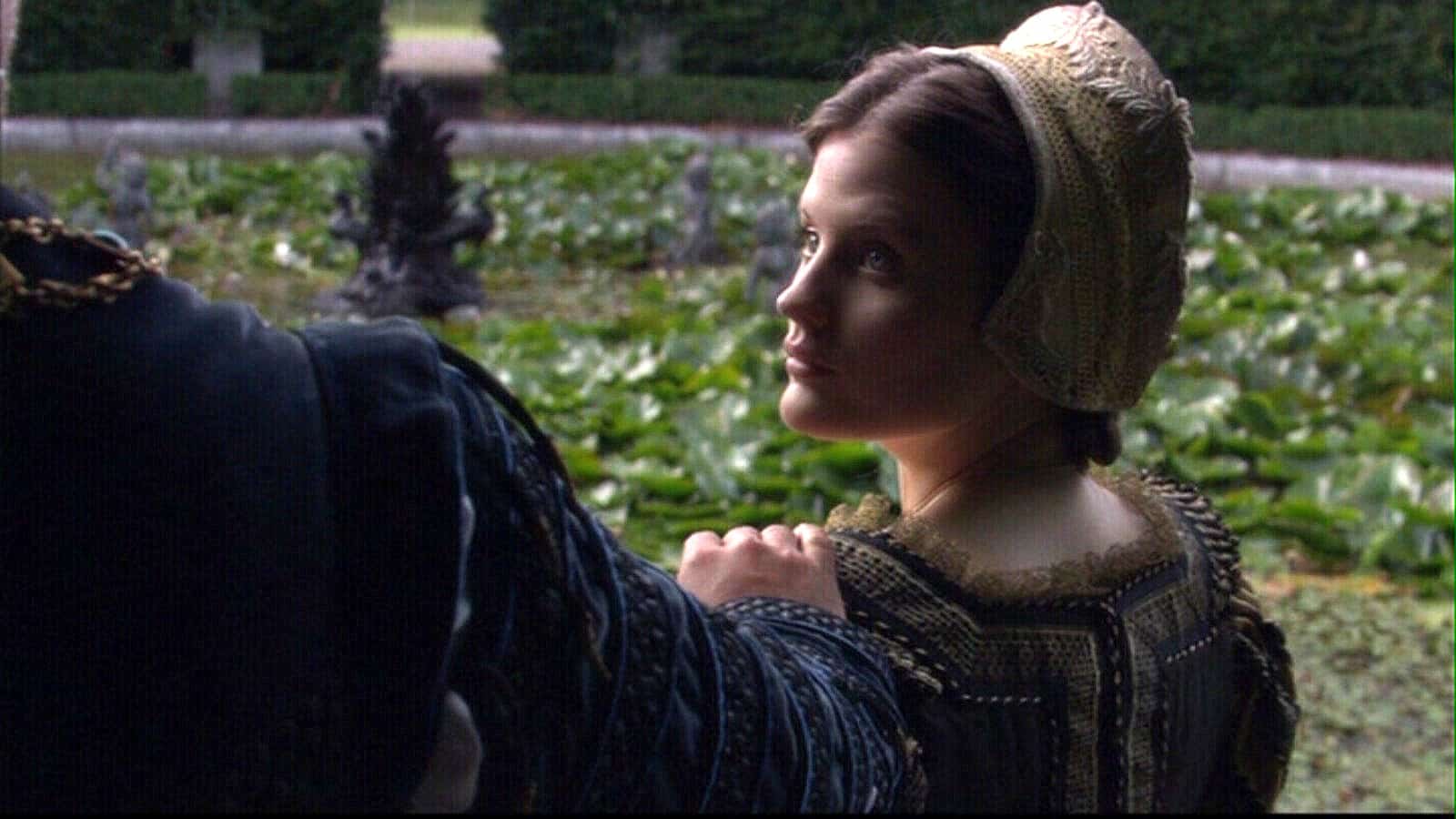
Mary Basset is one of the lesser-known ladies of the Tudor era, but her story is a fascinating one and this letter offers some gems.
So first, some background. Mary was the youngest daughter of Honor Grenville, Lady Lisle. Lady Lisle’s third husband was Arthur Plantagenet, the illegitimate son of Edward IV who was appointed Lord Deputy of Calais. Because of this posting, the couple’s letters were saved with the English state papers – and there were a lot of them! Lady Lisle had several daughters, and was determined to maintain her place in society so she could place them in good marriages; her letters give us amazing insight into gift giving and social climbing…at least until she and her husband were accused of treason.
What had they done? It was said that they planned to marry one of their daughters (Mary!) to a Catholic Frenchman – at a time when Henry VIII was at the apex of his swing towards Protestantism AND convinced that the French were planning an assault on Calais. In fact, the French would not attack Calais for another twenty years, but the marriage plans were not far off: Mary had received love letters from a young French aristocrat, Gabriel de Montmorency, Seigneur de Bours, who had indeed proposed to her. When the accusations began, Mary disposed of the letters in the cess pit…but they were found and this made the situation worse.
Alas, those love letters were not kept. Instead, all we have is THIS letter, written about three years earlier when Mary was first sent to the Bours household aged around sixteen. It may look a little random, but it contains a lot of information that we might just pass by. First, the idea that mom sent her daughter 140 pearls and a crown helps us establish the level of wealth that ladies were expected to display at all times, and understand how much more would have been required if Mary had been placed at Court rather than a country home (albeit the country home of a member of the French nobility). Second, the details that Mary gives us about the services rendered to her tell us a lot about the way people extended credit to each other, how sums were advanced over a long period of time, and how these advances depended on a person’s good name. This was a key part of life – favors done and presents given – and it is interesting to see how discreet people were about it!
So without further ado, Mary’s letter:
Madam,
I recommend myself most humbly to the good grace of my lord my father, and yours.
Madam, I have been much pleased because madame de Bours sends to you to know of your welfare. I thank you most humbly for the 140 pearls and the crown that it has pleased you to send me. I send you a pair of knives to put in your cabinet, because it seems to me that you have one of such a fashion. The spinnet player who taught me at Gaissart, madame de Bours has paid, because he had been there and has taken another in this town; also, I have given the schoolmaster who taught me to read and write ten sols only, in waiting to hear from you. The said madame de Bours has not had my satin dress repaired yet, because she has been very full of impediments up to this hour; she will have it repaired for Easter, and also will look about her to find some good spinnet. I am much indebted to the said lady; she always takes much pains for me. She does not send you the details of what she has spent for me; but when you send here some one of your own people, the whole will be given him to bring to you. This bearer who now goes to you is one of the servants of the house; when we go into the country he attends madame’s chariot. I have always promised to give him some present: I recommend him to you. I have been today to see my sister at the Pont de Remy: I have brought letters, which I send you. And thus I conclude, madam, praying our Lord to give you health and a good and long life.
From Abbeville this 13th of March.
Your very humble and obedient daughter,
Mary Basset
Letters of Royal and Illustrious Ladies of Great Britain: From the Commencement of the Twelfth Century to the Close of the Reign of Queen Mary, Volume 2
***
If you like my posts, you’ll love my books! My Seymour Saga trilogy tells the gripping story of the short-lived dynasty that shaped the Tudor Era. Jane the Quene skews romantic, The Path to Somerset is pure Game of Thrones (without the dragons), and The Boy King is a noir coming-of-age. Get them now through Amazon, Barnes & Noble, Kobo, and Apple, or even your local independent bookstore!

(PS Already read them? Did you love them? Then please review them – even just a stars rating! It makes a huge difference in helping new readers find them and would mean the world to me!)

Always glad to see my ancestors in the limelight. Arthur 6th Viscount Lisle Plantagent Wayte, KG is my direct ancestor (16 generations). I also own a copy of the Lisle Letters (edited by Muriel St. Clare Bryne)…fascinating reading! Keep up the good work!
The Lisle Letters represent a huge contribution to our understanding of the Tudor era!
How immensely interesting letters like this are! Thanks Janet.
My pleasure – I do love letters!!